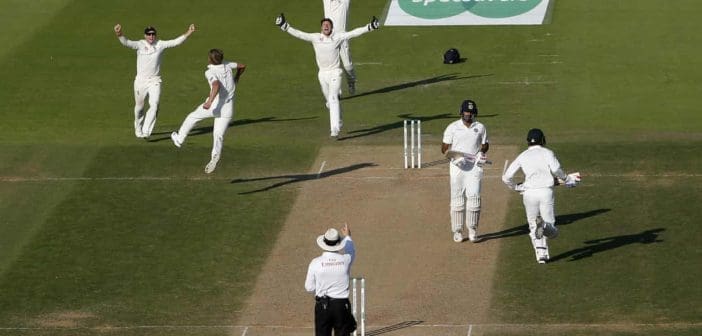Of all the things I have posted on Twitter, the one which stirred up the most ire in Twitterland, or that tiny proportion of it that follows me, was when I welcomed Ireland being invited to play a four-day test at Lord’s.
This move was condemned by the ignorant, uncomprehending and aggressive — of which Twitter appears to have no shortage — for test matches, by definition, had to be five days and have always been five days. This is absolute tosh.
Tests have been scheduled for all manner of lengths — or none at all. Well, three to six days (and the length of the days themselves have varied) to be exact, or none at all.
In Australia up until the Second World War all tests were played to a finish and thus were timeless — or until the visitors had to catch the boat home in a couple of cases, hence there were two draws in the first 69 years of test cricket in Australia.
Three-day tests, last seen in England in 1949, have probably had their day for good (but who knows?). But the four-day test between Ireland and England at Lord’s will continue a tradition in England which looked to have died out in 1947.
South Africa have already revived it in their own country, in a test match with Zimbabwe in 2017 which they won in two days, their first four-day test since their series with New Zealand in 1960/61.
Prior to this 2017 match, the last four-day test matches had been in 1973, a three-match series between New Zealand and Pakistan in which Sir Richard Hadlee made his debut.
The reason test matches expanded from three to four and then five days is that the matches themselves expanded in length. But now tests are contracting.
Fewer tests in England are lasting into a fifth day, and some that do go only limp there, after the side batting third has piled on the runs before a declaration which set the side batting last no chance of either making the runs or batting out time. The later part of these third innings are often only one stage up from a going-through-the-motions exercise. Four-day matches — albeit only four hours or 13 per cent shorter — may tighten up this aspect and improve the product.
In each of the past two home English seasons, only two of the seven matches have gone into a fifth day. Indeed, over the past five years, almost a quarter have not even made it into a fourth day.
So what, some may argue. Do these empty days cause any harm? Well, yes, they do.
Test cricket in most countries is a loss maker. Even in England, where matches usually make a profit, the fifth day itself makes a loss, even when there is play. Everything has to be laid on for that day, but gate receipts from that day are little to none.
Put crudely, in most countries a four-day test will lose less money than a five-day one. When in some match-ups the fifth day is likely to do nothing than stand empty and drain the coffers, what is the point?
Indeed can cricket afford it? When Ireland were granted test status this did not result in a host of test matches being scheduled for them. When each test match in Ireland is projected to be a loss-maker, they literally cannot afford to play many.
They are due to play only 13 tests, mainly away, in their first five years as a test nation — roughly the number England play in a typical year.
If Ireland, together with several other nations, are going to have a meaningful and extensive participation in test cricket, ways are going to have be found to make this possible from a financial and scheduling standpoint. Matches of four six-and-a-half days instead of five six-hour days, may be one way; an ICC rethink over funding is another one.
Far from signalling the death-throes of test cricket, selective use of four-day tests may help give it fresh life and relevance. I’m on @hitfor6cricket by the way if you wish it abuse me of this notion — or just abuse me.
![Prost International [PINT]](https://prostinternational.com/wp-content/uploads/2021/08/PINTtFontLogoRoboto1536x78.jpg)



